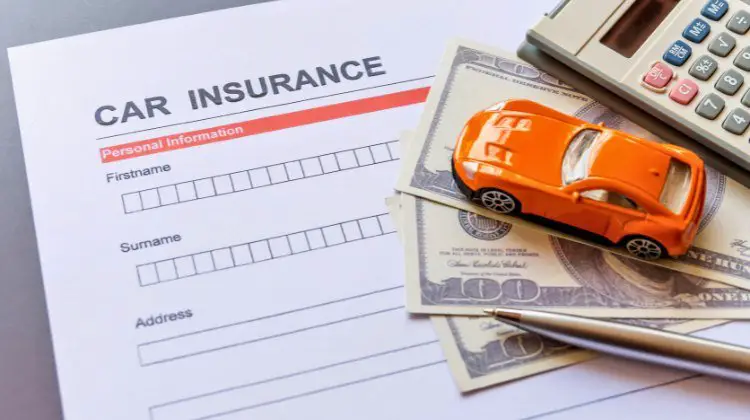It’s frustrating when you open your car insurance bill and the number is higher than you expected. As we look at the average cost of car insurance in 2025, prices are on the rise, leaving many drivers wondering what they’ll have to pay. Understanding these costs is the first step to finding a better rate.
Knowing the national numbers helps you see where you stand, but the story behind the average cost of car insurance in 2025 is more about you than you might think. The latest data shows the national average rate for a full coverage insurance policy is now $2,671 per year. That breaks down to a monthly cost of about $223.
If you only carry minimum liability coverage, the average annual rate is closer to $806, which is about $67 a month. These car insurance rates have climbed about 12 percent since last year, a trend that’s hitting family budgets hard. Remember, your real price tag depends on a list of things, from your zip code to the car you park in your driveway.
Table of Contents:
- Why Your State Can Change Everything
- How Your Personal Details Shape Your Premium
- The Average Cost of Car Insurance in 2025 Based on Your Vehicle
- Simple Ways to Lower Your Car Insurance Bill
- Conclusion
Why Your State Can Change Everything
You could be the safest driver on the road, but where you live plays a huge part in your insurance bill. Some states have higher accident rates, more car thefts, or even more expensive auto repair shops. All of these local factors get baked into the prices that car insurance companies offer in your area.
Population density is a major factor; more cars on the road in a smaller area usually lead to more accidents. Weather also plays a role, with states prone to hurricanes, hail, or heavy snow seeing higher average rates due to weather-related claims. State laws about how much coverage car insurance requires also create a baseline for costs.
The legal climate in a state can also affect the average car insurance rate. Some states have a higher frequency of auto-related lawsuits, which drives up legal costs for insurers. These expenses are then passed on to consumers through higher insurance premiums.
The Most Expensive States for Car Insurance
If you live in one of these states, you are likely paying some of the highest rates in the country. This is often due to a combination of crowded cities, severe weather events, and higher costs of living. It’s just more expensive to fix cars and handle claims in these places.
In New York, the high population density of New York City and surrounding areas means more traffic and a higher likelihood of accidents. Louisiana faces challenges from frequent, severe weather like hurricanes, along with a high rate of litigation. Florida also contends with hurricanes, a large number of tourist drivers, and a high rate of insurance fraud, which inflates the average car insurance cost for everyone.
| State | Average Annual Full Coverage Premium |
|---|---|
| New York | $4,031 |
| Louisiana | $3,953 |
| Florida | $3,874 |
| Nevada | $3,566 |
| Colorado | $3,233 |
The Most Affordable States for Car Insurance
On the flip side, drivers in other states get a much better deal. These areas typically have a lower population density, less traffic, and lower crime rates. This calmer environment leads to fewer claims, and the savings get passed on to you, resulting in a lower annual premium.
States like Idaho, Vermont, and Maine benefit from their largely rural nature, which means fewer cars on the road and a lower accident frequency. Hawaii has a unique island geography that limits long-distance driving and results in lower claim rates. New Hampshire is also notable because it doesn’t legally require drivers to have liability insurance, though most still purchase it for financial protection.
| State | Average Annual Full Coverage Premium |
|---|---|
| Idaho | $1,443 |
| Vermont | $1,491 |
| Maine | $1,631 |
| Hawaii | $1,650 |
| New Hampshire | $1,655 |
How Your Personal Details Shape Your Premium
Your location sets the stage, but your personal profile determines your final car insurance rate. Insurance companies look at your specific situation to figure out how likely you are to file a claim. Let’s break down the factors that matter most.
Your Age and Driving Experience
Your age is a huge factor in determining the insurance premiums you’ll pay. Younger, less experienced drivers statistically get into more accidents. According to the Centers for Disease Control and Prevention, teen drivers have a much higher risk of being in a crash.
Because of this higher risk, insurers charge the highest premiums to teen drivers and the young adult population. Age rates tend to drop significantly once a driver reaches 25, as they gain more experience behind the wheel. The average rate continues to decrease for adult drivers into their 50s, which are often considered the safest years.
Rates can start to inch up again for senior drivers, as reaction times may slow with age. However, many senior drivers maintain excellent records and can qualify for specific discounts to keep their annual rates low. Both male drivers and female drivers see similar patterns in how their age affects their premiums.
| Age | Average Annual Full Coverage Premium |
|---|---|
| 18-year-old | $4,925 |
| 25-year-old | $3,294 |
| 40-year-old | $2,671 |
| 60-year-old | $2,415 |
The Impact of Your Driving Record
This one is pretty simple: a clean driving record saves you a lot of money. Insurers reward safe drivers with lower car insurance rates. Even one little mistake can cause your insurance premium to jump.
A single speeding ticket can increase your rate by an average of 22 percent, staying on your record for about three years. If you cause an accident, you could see your bill go up by 44 percent, and this will impact your costs for three to five years. A DUI conviction is the most costly, nearly doubling your premium with a 96 percent average increase and staying on your record for much longer.
Maintaining a spotless record is the most direct way to prove to your provider that you are a low-risk driver. This is why defensive driving and avoiding distractions are so important for keeping your average annual rate down. Consistent safe driving leads to the best prices over time.
| Incident | Average Annual Full Coverage Premium | Percentage Increase |
|---|---|---|
| Clean Record | $2,671 | 0% |
| Speeding Ticket | $3,272 | 22% |
| At-Fault Accident | $3,841 | 44% |
| DUI Conviction | $5,233 | 96% |
How Your Credit Score Comes into Play
Your credit history can also affect your insurance costs. In most states, insurers use a credit-based insurance score to predict how likely you are to file a claim. Research has shown a connection between credit history and claim frequency, as it can indicate a person’s overall level of responsibility.
Drivers with poor credit pay nearly 76 percent more for full coverage than those with good credit. Maintaining a healthy credit history by responsibly managing a credit card, paying personal loans on time, and keeping a positive checking account balance can have a direct impact on your annual cost for car insurance. However, not every state allows this practice.
California, Hawaii, and Massachusetts have banned the use of credit scores in setting auto insurance rates. In these states, your financial history will not be a factor in your insurance quotes. For drivers elsewhere, improving your credit score can be a powerful way to lower what you pay.
The Average Cost of Car Insurance in 2025 Based on Your Vehicle
The car you drive says a lot about you, and it tells your insurance company how much it might have to pay out. The make, model, and year of your vehicle directly influence your premium. It all comes down to risk and repair costs.
A luxury sports car with expensive parts will cost much more to insure than a standard family minivan. The Insurance Institute for Highway Safety (IIHS) provides safety ratings that insurers watch closely. The cheapest car to insure is often one with great crash test scores, advanced safety features, and affordable replacement parts.
On the other hand, cars that are popular with thieves can carry higher premiums. Your chosen coverage car insurance levels also matter. An older, less valuable average car might only need liability coverage, while a newer, financed vehicle will require comprehensive and collision coverage, raising the annual rate.
| Vehicle Type | Average Annual Full Coverage Premium |
|---|---|
| Subaru Outback | $2,223 |
| Ford F-150 | $2,607 |
| Toyota Prius | $2,751 |
| BMW 330i | $3,287 |
| Tesla Model 3 | $3,531 |
Simple Ways to Lower Your Car Insurance Bill
Seeing all these numbers can be a little overwhelming. The good news is that you have some control over what drivers pay. Here are a few straightforward ways to cut your costs and find cheaper insurance premiums.
- Shop Around for Quotes
Don’t just stick with the first company you find. Get insurance quotes from at least three different insurers because prices for the same coverage can vary wildly between car insurance companies. You might find that providers like American Family or American National offer a significantly better sample rate for your specific situation. - Bundle Your Insurance Policies
Do you also have homeowners insurance or renters insurance? Most companies offer a multi-policy discount if you buy more than one type of coverage from them. This is often one of the biggest discounts you can get, and it can also simplify your finances by having multiple policies with one provider, which could also include life insurance or even pet insurance. - Increase Your Deductible
Your deductible is what you pay out of pocket before your insurance kicks in after a claim. A higher deductible usually means a lower premium. Just make sure you can comfortably afford to pay it if you need to file a claim for your average car. - Ask About Discounts
You might be surprised at the number of discounts available. Companies offer savings for being a good student, having anti-theft devices, taking a defensive driving course, or having a clean driving record. Other potential discounts include those for low mileage, vehicle safety features, and professional affiliations. - Review Your Coverage Annually
Your needs change, and your insurance policy should reflect that. For instance, if you’ve paid off your car loan, you might consider dropping full coverage if the car’s value is low. A licensed insurance professional can help you assess if your current coverage car setup is still the right fit for your budget and risk tolerance.
Conclusion
The story of car insurance costs is complex. The national average rate gives us a starting point, but it doesn’t tell the whole tale. Where you live, who you are, what you drive, and how you drive are the chapters that define your final premium.
By understanding how the average cost of car insurance in 2025 is calculated, you can start making smart choices. While you can’t change your age, you can work on your driving habits and build your credit. To find the cheapest car insurance companies for your needs, you must compare quotes and actively seek out discounts.
Ultimately, taking control of these factors can help you find an insurance policy that provides the protection you need at a price that fits your budget. Don’t be discouraged by the rising average annual cost. Be proactive, do your research, and find the best annual rate available to you.








Reader Interactions